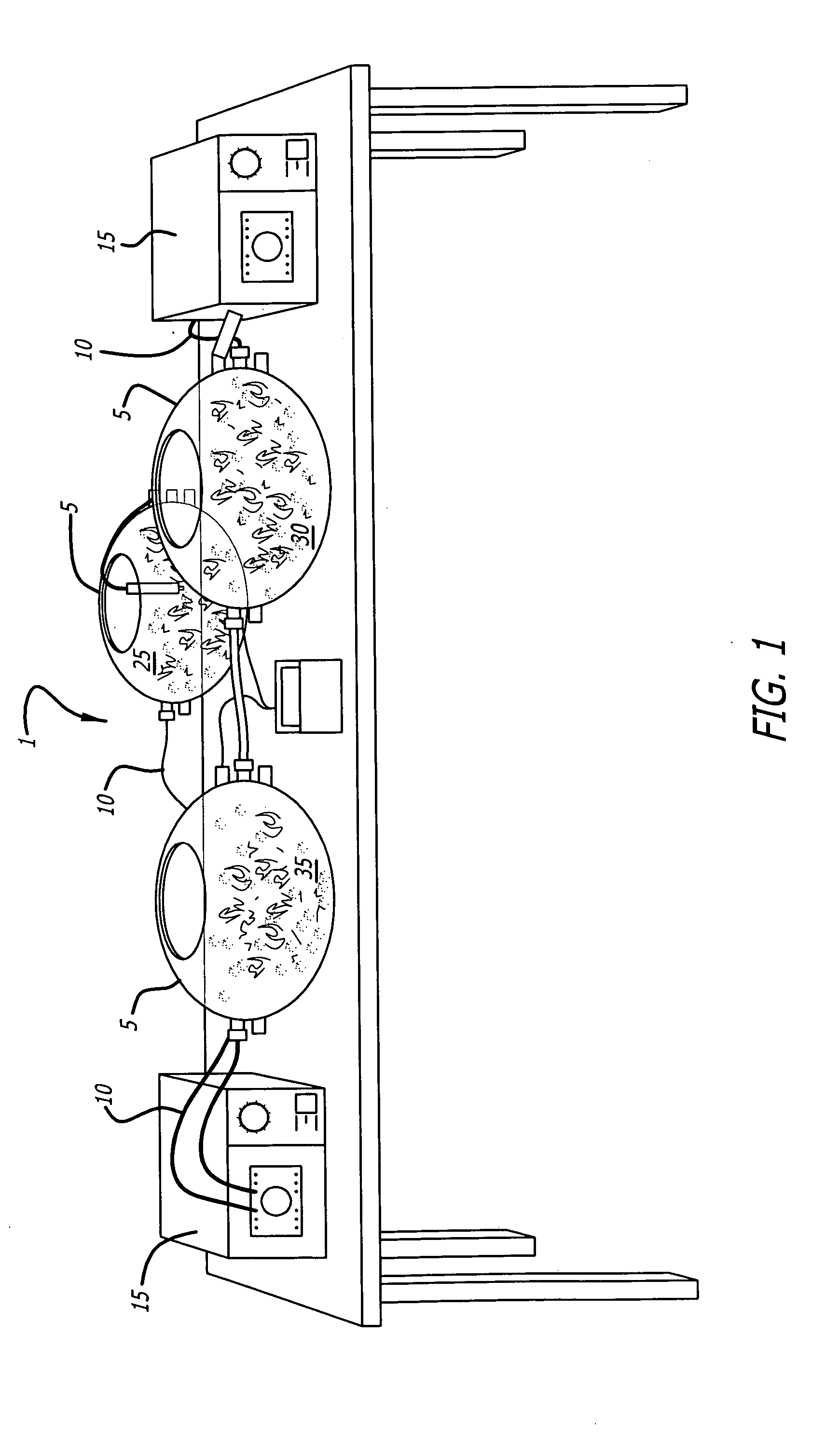Stem cell maturation for all tissue lines
a stem cell and all-cell technology, applied in the field of cell biology, can solve the problems of difficult purification of neuronal stem cells, limitations of adult stem cell plasticity, and limited studies using stem cells derived from bone marrow (i.e. hematopoietic stem cells), and achieve the effects of improving the quality of life and reducing the risk of cancer
- Summary
- Abstract
- Description
- Claims
- Application Information
AI Technical Summary
Problems solved by technology
Method used
Image
Examples
example 1
Isolating the Primordial Sex Cells (PSCs)
[0048] The mammal or animal is anesthetized and the gonads are removed and transected. The primary sex cells (PSCs) are isolated with the aid of a microscope. Alternatively, a biopsy punch of the gonads can also be used and the PSCs isolated with the aid of a microscope. Under the microscope, the PSCs have stem cell morphology (i.e. large, round and smooth) and are mechanically retrieved from the gonads. In particular, the spermatogonia and oogonia, are retrieved from the gonads. In particular, type A and type B spermatogonia are retrieved.
[0049] To obtain an ova / ovum, the animal is superovulated, and at least one ovum is retrieved and placed in nutritive media to keep it viable. The ova is held in place using a micropipette and with another micropipette enter the ova until the tip is adjacent to the ova nucleus. Enucleating the ova is possible by applying a small vacuum to the micropipette. Discard the ova (1n) nucleus. Enucleation methods...
example 2
Isolation and Purification of Type A Spermatogonia
[0051] The following is an illustrative example for isolating and purifying Type A Spermatogonia. In step 1, the testis from 6-day-old donor mice (n=8) are removed and place into a petri dish with sterile phosphate-buffered saline (PBS) containing 10% penicillin-streptomycin.
[0052] Next, in step 2, the testis are decapsulated under a dissection microscope, and the seminiferous cords / tubule is collected, pooled and placed into a conical centrifuge tube containing a solution of 2 mg / ml of collagenase (Sigma Chemicals, St. Louis, Mo.) and 10 μg / ml DNase I (Sigma Chemicals, St. Louis, Mo.) in Dulbecco modified Eagle medium (DMEM; Specialty Media).
[0053] In step 3, the contents, after centrifugation, are incubated at 37° C. for 30 minutes on a shaker with occasional gentle pipetting to dissociate the interstitial Leydig cells from the semiferous tubules.
[0054] In step 4, after incubation, the tubules are allowed to settle down to the ...
example 3
Isolation and Purification of Adult Stem Cells
[0063] The following is an illustrative example of a procedure of isolating and purifying adult animal stem cells, specifically, multi-potent adult progenitor cells (MAPC'S). First, in step 1, the femurs and tibias are removed from 5-8 week old donors and the bones are placed in HBSS+ (Gibco-BRL 14170161) / 2% FBS (Hyclone) / 10 mM HEPES buffer (Gibco-BRL 15630080), on ice. The bones should be free of muscle and fatty tissue. The bones are cut just before flushing to eliminate a loss of BMC. Additionally, the bones are kept on ice at all times until process.
[0064] Next, in step 2, the tibias and femurs are flushed with a 22 gauge needle using a 3 cc syringe filled with HBSS+ (Gibco-BRL 14170161) / 2% FBS (Hyclone) / 10 mM HEPES buffer (Gibco-BRL 15630080). (Depending on the number of donors used, it is best to try not to use more than 15 ml of HBSS+ when flushing bones so that all of the sample will fit into one 15 ml conical tube.) The BMC is...
PUM
 Login to View More
Login to View More Abstract
Description
Claims
Application Information
 Login to View More
Login to View More - R&D
- Intellectual Property
- Life Sciences
- Materials
- Tech Scout
- Unparalleled Data Quality
- Higher Quality Content
- 60% Fewer Hallucinations
Browse by: Latest US Patents, China's latest patents, Technical Efficacy Thesaurus, Application Domain, Technology Topic, Popular Technical Reports.
© 2025 PatSnap. All rights reserved.Legal|Privacy policy|Modern Slavery Act Transparency Statement|Sitemap|About US| Contact US: help@patsnap.com

